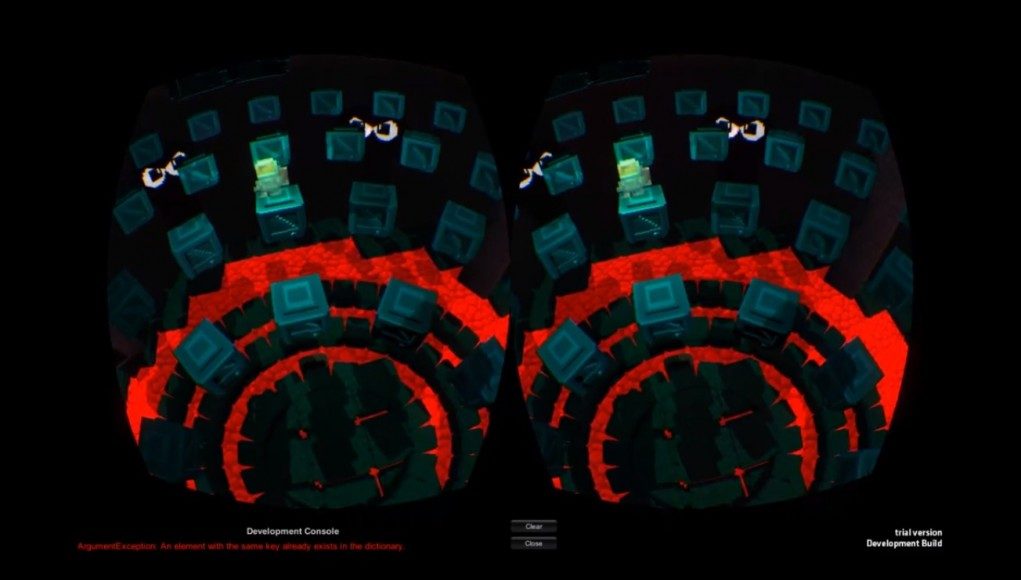While the vast majority of early Oculus Rift game development is focusing on first-person titles, Super Mega Mega shows that there might very well be room for side-scrollers on the Rift.
Developer by Australia-based indie studio Blunt Instrument, Super Mega Mega is a prototype title with Oculus Rift support built in Unity. Though it functions much like a 2D side-scroller, the environment is fully 3D. The user’s perspective is from the center of a cylinder, out of which the level is fashioned. Unlike your classic 2D sidescroller, the player can look to see what’s ahead, above, below, or behind — revealing different ways to navigate or hidden coins in the process.
The stereoscopic 3D aspect of the Oculus Rift has not gone to waste either. The game features areas where the player can jump forward or back in 3D space, similar to that of Little Big Planet (Media Molecule, 2008) — unlike LBP, you get the benefit of truly feeling the depth thanks to the Rift’s 3D.
Blunt Instrument has released a prototype of the game: Download Super Mega Mega Prototype
The developer’s most recent update notes that there’s still much to come for Super Mega Mega beyond the prototype:
Now that [the prorotype is] done it’s time to start to flesh out more of the mechanics and level structures.
I’ll be avoiding anything theme/art related for a little while longer and just stick to adding a bunch of the platformer ‘tools’ (moving platforms, variable physics, enemy types, bosses etc) this should provide a good base to build the rest of the game upon.
I’ve created a few hacks during the prototype phase and I’ll need to throw a bunch of it away and re-make it in a nicer more user friendly way. For example, each unity scene stands on it’s own with no shared data or configuration files. That makes it nice and easy to load/reset a level but it also means all the levels need to be updated if any of the global configs change. This is first on the list!
The level editor will need to flow a lot better than it currently does. I’ve had to manually place a few pieces of the levels because I didn’t have time to create the editor support. Most of it is non-trivial it’s just a matter of getting in there. Manually placing tiles instead of painting them is some kind of hell.
Being able to look ahead is a unique facet of headtracking with a side-scrolling platformer; I’d be happy to see more integration between headtracking and gameplay. Maybe certain sections of the game will have platforms that are controller by head movement? Perhaps some enemies will pursue you unless you’re actually looking at them through the Rift? Or maybe projectiles will come flying at the camera and need to be dodged with a quick head roll?
I’ll be keeping my eye on Blunt Instrument for more!
Thanks to Aaron for the tip!







